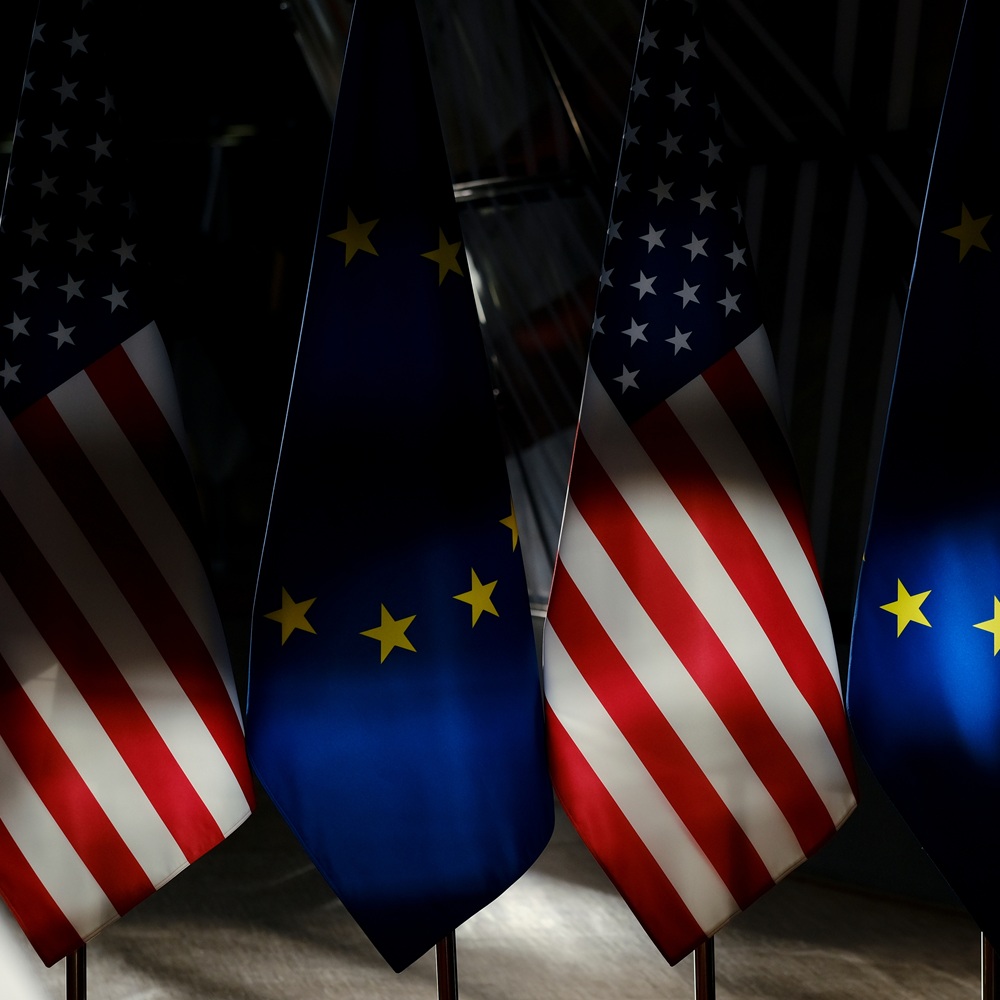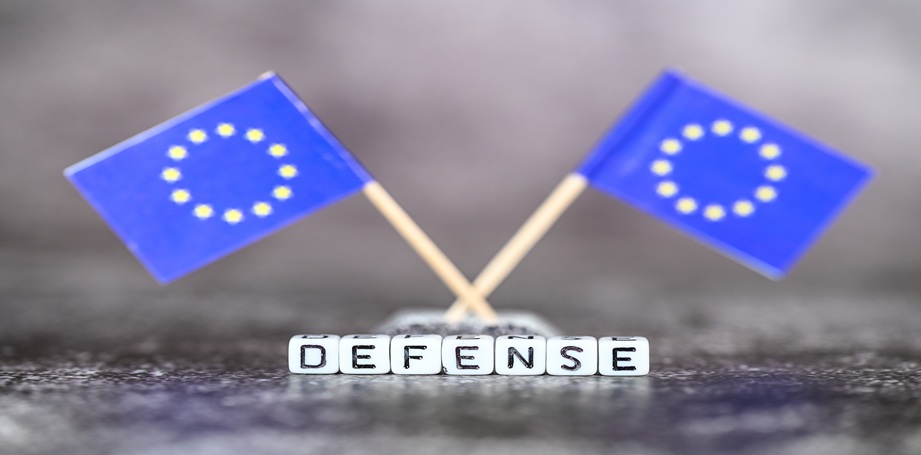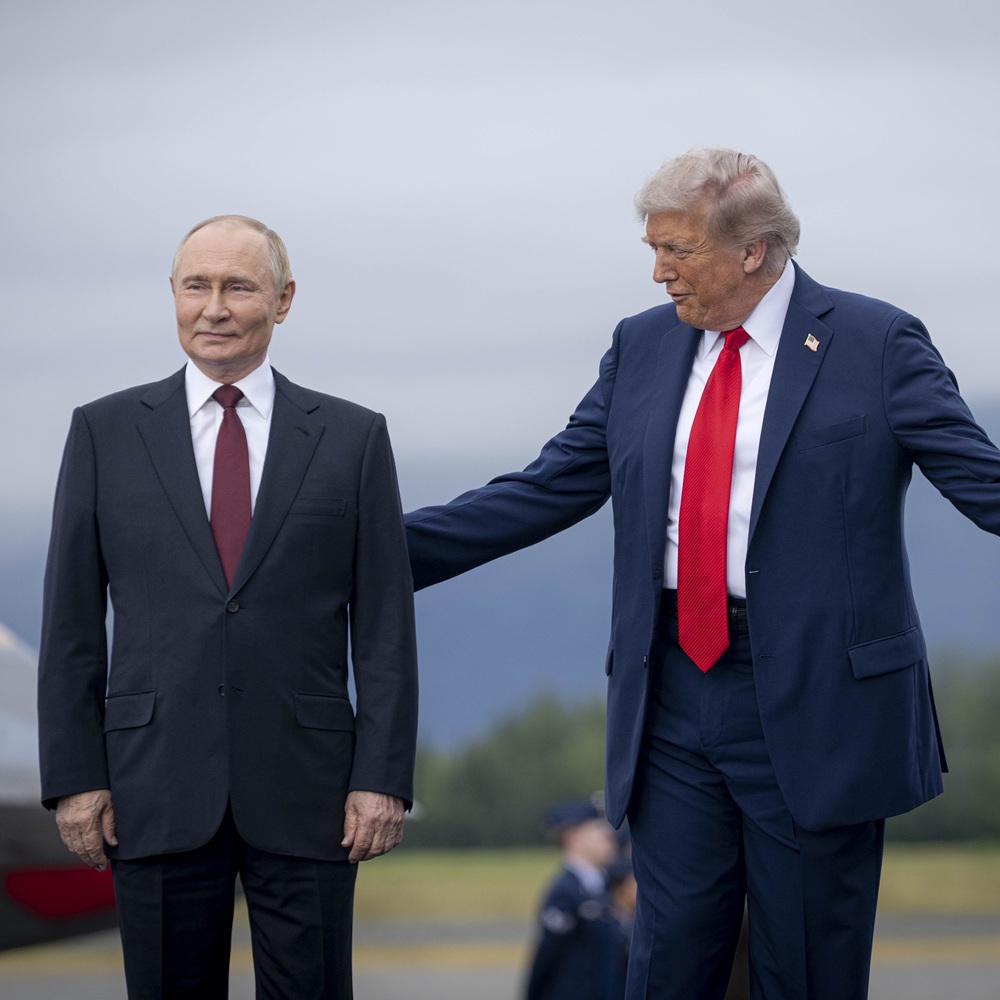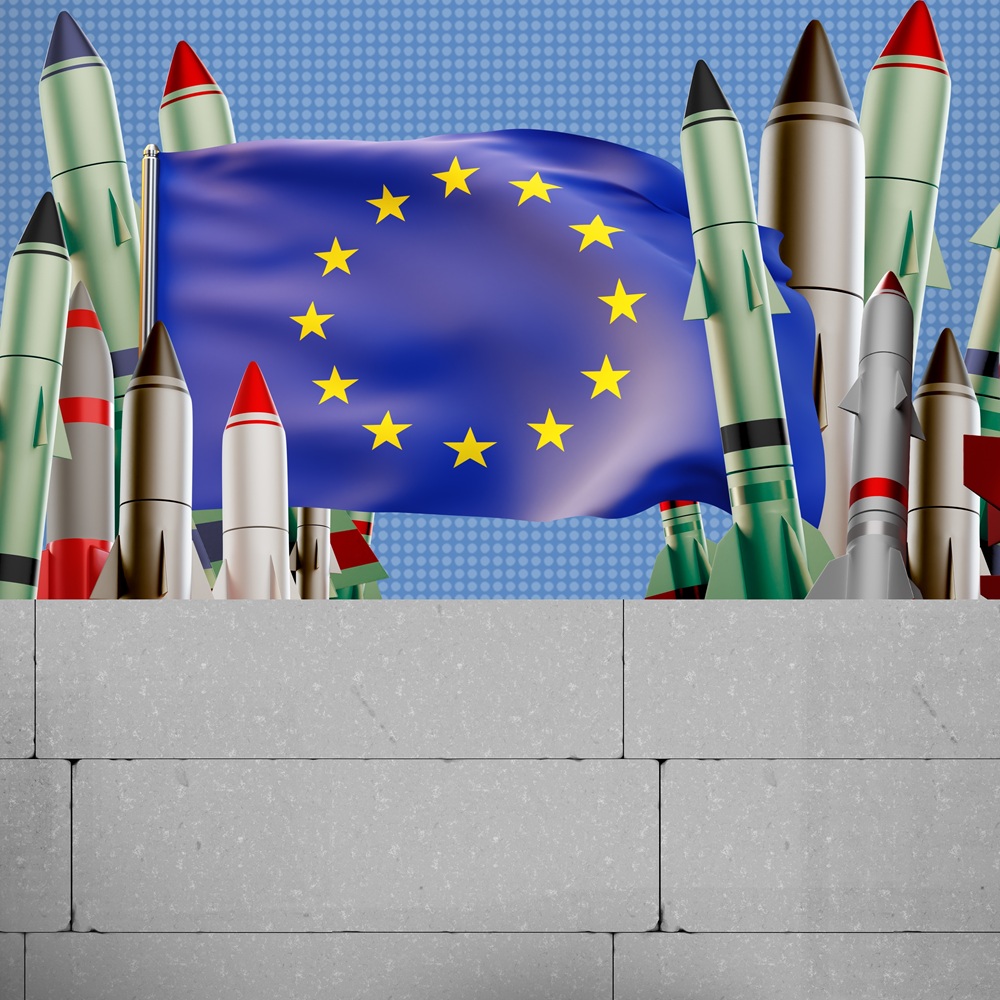
Navigating uncertainty: Where are EU–US relations headed?
by Ionela Maria Ciolan , Jason C. Moyer
Abstract The transatlantic relationship is undergoing a period of critical recalibration, marked by the return of a more transactional US administration and a world order moving towards multipolarity. The return of Donald Trump to the helm of the White House with an ‘America First’ doctrine raises serious questions about US involvement in the transatlantic alliance. President Trump’s repeated claims that the EU was set up to ‘screw’ the US reflect both that his administration is unwilling to engage productively with the EU and that it distrusts multilateral forums, preferring bilateral, nation-to-nation contacts. This article seeks to bring clarity to the future US–EU relationship by identifying some of the points of contention and offering a perspective on how the transatlantic partnership can move forward constructively. KeywordsTransatlantic relations, EU–US relations, Trump administration, EU, Bilateral relations, Multipolar world order Introduction Three years after Russia’s full-scale invasion of Ukraine, a new axis of power is taking form, led by Russia and China and supported by North Korea, Iran and Belarus. This shift brings a profound transformation within the global balance of power and is a direct threat to the liberal international world order. In the midst of this geopolitical recalibration, the return of Donald Trump to the helm of the White House with an ‘America First’ doctrine poses serious questions about US engagement with the transatlantic alliance. There are growing worries about the US’s willingness to continue to honour its Article 5 commitments within NATO and maintain an active role in the collective defence of Europe, but also about the role of the US as a supporter of Ukraine and the liberal multilateral rule-based system. State of play in the EU–US partnership During the first Trump administration, at the state funeral of former US president George H. W. Bush, the EU’s ambassador to the US, David O’Sullivan, was asked to stand at the back of the line-up to pay his respects, breaking diplomatic protocol (Knigge 2019). He politely acquiesced, but in the days that followed it came to light that during the first Trump administration, the US Department of State had downgraded the diplomatic status of the EU in the second half of 2018 without informing the EU Delegation in Washington (Smith 2019). Beyond the failure to communicate this important diplomatic status change, which was not well received in Brussels, and in addition to the protocol issue of having a long-serving foreign ambassador downgraded on the spot at a state funeral, this sent a clear message: the Trump administration does not respect the EU, and nor does it view the Union as an interlocutor. On many occasions during his first administration, Trump’s officials clashed with the EU. In a major foreign policy speech in Brussels, then–Secretary of State Mike Pompeo openly questioned the continued value of the EU and urged European countries to reassert their national sovereignty (Pompeo 2018). As the second Trump administration begins its work with unprecedented vigour, so far the EU has hardly featured as a consideration for the president or his top officials. At the time of writing, the nominated US ambassador to the EU, Andrew Puzder, has not yet testified (Singh and Jones 2025). In his early remarks as secretary of state, Marco Rubio has hardly mentioned the EU at all. On 29 January, the first call between High Representative Kaja Kallas and Rubio took place, alleviating some concerns about the distinct lack of US–EU dialogue taking place due to the change in administration (Liboreiro 2025). However, at the 2025 Munich Security Conference, the new US administration went beyond the usual call for European allies to spend more on defence. Vice-President JD Vance drove home the seismic shift underway in the US commitment to European defence and upended decades of policy (Quinville 2025). Moreover, on the European side, the attempts by some members of the Trump administration to support far-right candidates in Europe (as done by Elon Musk and Vance in Germany and Romania) bring a new level of discomfort and mistrust, as it looks like parts of the administration and Trump’s brand of conservatism, colloquially known as ‘Make America Great Again’ (MAGA), want to export their domestic cultural wars to Europe, thus attacking the core shared value of the transatlantic partnership: liberal democracy. A divorce or just a rough patch in transatlantic relations? Over the past seven decades, successful cooperation between the US and European institutions has helped to build the liberal multilateral world order and to uphold the UN Charter by promoting global stability and prosperity. With a combined population of nearly 800 million people, the US and the EU have the most integrated economic cooperation in the world, accounting for 43% of global GDP and 30% of global trade in goods and services (European Council 2025). President Trump’s repeated claims that the EU was set up to ‘screw’ the US reflect the Trump administration’s unwillingness to engage productively with the EU and its distrust of multilateral forums, and hence its preference for bilateral, nation-to-nation contact. The administration’s growing distrust of the EU also reflects the changing public perception of the EU among segments of the American public, such that 29% of Republicans view the EU as ‘unfriendly’ or ‘hostile’, up from 17% last year, and negative perceptions of Europe among Democrats are also slowly rising (The Economist 2025). This represents an inward turn in American society as politics becomes increasingly polarised. On the other hand, favourable attitudes among Europeans towards the US have fallen below 50%, with only around a third of Germans (32%) and the French (34%) having a positive view of the current American administration, with the least favourable views being held in Denmark, where only 20% approve (Britton 2025). Less than 100 days into his second term, at the time of writing, Trump has already broken long-standing norms and practices in US–European relations. Vance’s critical discourse at the Munich Security Conference, which harshly attacked European values, brought a major departure from traditional diplomatic language. The US vote alongside Russia and North Korea, and against traditional allies, on a UN resolution condemning Russian aggression in Ukraine and calling for the return of occupied territory to Kyiv further deepened concerns (Landale and Jackson 2025). Additional actions, such as the controversial Oval Office meeting between the Trump administration and Ukrainian President Volodymyr Zelensky, the temporary suspension of intelligence and military assistance to Ukraine, the exclusion of Europeans from Ukrainian peace negotiations, and the disproportionate and unjustified tariffs on the EU have heightened European anxiety. These moves have raised fears of a possible end to the transatlantic partnership and a wider US retreat from global leadership. For most Europeans, the second Trump administration appears to be strategically prepared, driven not only by revenge in domestic politics, but also by a sense of retribution in foreign policy. But while distrust has never been higher, it would be a mistake to take the path of severing the relations between the US and the EU. The Euro-Atlantic partnership has suffered similar lows in the past, from vastly different perspectives on the US invasion of Iraq, the Obama administration’s pivot to the Indo-Pacific and the botched withdrawal from Afghanistan. Points of tension and contentionTech On tech regulation, storm clouds are already gathering as Trump has lashed out at the EU for regulating big tech companies (Doan and Stolton 2025). During the transition, the new Trump administration has been noted for the active participation of several tech CEOs. This was most evidently on display during Trump’s inauguration, which saw the likes of Mark Zuckerberg (Meta), Jeff Bezos (Amazon) and Elon Musk (Tesla), as well as other billionaires from around the world (including TikTok’s CEO) gather to welcome in the new administration (Kelly 2025). These tech CEO supporters, not usually as prominently on display in American politics, are flocking to the new administration, which has pledged massive tax cuts for billionaires, the promotion and deregulation of cryptocurrencies, and the removal of restrictions on free speech and fact-checking (Samuel 2025). The EU’s attempts to regulate big tech companies under this new administration will be even more difficult, given their close proximity to and influence on the second Trump presidency. Energy Another likely area of divergence between the US and the EU is in their approaches to energy policy and climate policy. Trump has pledged to ‘drill baby drill’, promising to fund more fossil fuel extraction and curbing green and renewable projects. He has openly called climate change a hoax and ended US participation in the Paris Climate Agreement. Meanwhile, the EU and its member states continue to invest heavily in renewables, with clean energy sources accounting for 70% of the bloc’s electricity demand in 2024 (Vetter 2025). The US, already trailing in wind power and investment in renewables, now risks falling irrevocably behind most of the developing world in clean energy production. Trump might find less of a market for fossil fuels in the EU as a result of its heavy investment in renewables, instead having to turn to other markets. Trade and tariffs On the campaign trail, Trump vowed that as president he would impose tariffs on everyone from China to neighbours, Mexico and Canada, to allies such as the EU. Although the initial tariffs placed on Mexico and Canada were swiftly lifted, a new wave of tariffs of 25% on foreign steel and aluminium was announced on 11 February. This move mirrors that of his first administration (Wiseman 2025). The EU was swift to respond, announcing a slew of counter-measures targeting iconic US products such as jeans, bourbon, peanut butter, whiskey and motorcycles. European steel companies could see as much as 3.7 million tons of steel exports lost as a result of US-imposed tariffs. Together, as noted above, the US and the EU account for about 30% of global trade, with deeply intertwined production and supply chains. However, this does not appear to be part of the Trump administration’s reasoning behind its decision to impose ‘reciprocal’ tariffs of 20% on almost all other EU products as part of its Liberation Day plan. The proposed tariffs could affect around 70% of EU exports to the US, worth around €532 billion ($585 billion) in 2024, with potential tariffs on copper, semiconductors, pharmaceuticals and timber still on the cards (Blenkinsop 2025). As the trade wars begin again, US–EU trade and economic relations will undoubtedly face difficult times over the next four years and risk undermining or limiting cooperation in other areas as a result. Responding to Trump’s announcement, President of the European Commission Ursula von der Leyen, astutely summed up: ‘The global economy will massively suffer. Uncertainty will spiral and trigger the rise of further protectionism. The consequences will be dire for millions of people around the globe’ (European Commission 2025). The EU, in addition to planning and implementing counter-measures to Trump’s tariffs, has to walk a difficult tightrope to maintain its investment ties (Casert 2025). The Arctic Trump’s approach to the Arctic in the days leading up to the transition and in his first three months, most notably his refusal to promise not to invade Greenland by force, if deemed necessary (Kayali 2025), sparked widespread condemnation from European leaders. Trump raised the idea of purchasing Greenland from Denmark in 2019 during his first term, and reasserted his intention to acquire the vast island, rich with rare earth minerals, on a fiery phone call with Danish Prime Minister Mette Frederiksen. In response, the Danish premier garnered support among European heads of state. However, Trump’s focus on Greenland could have profound implications for the balance of power in the Arctic region. Although the Arctic is increasingly discussed in geopolitical terms, in part due to Russia’s and China’s interests in new shipping routes, it remains a zone of peace. The implications of potential NATO infighting over Greenland, and the possibility that this could accelerate Greenland’s independence, could work to China’s or Russia’s advantage and risk disrupting the balance of power in the Arctic region that has allowed peace to prevail. Defence spending The Trump administration’s renewed push for European NATO allies to spend at least 5% of their GDP on defence has reignited tensions over transatlantic burden-sharing. During his first visit to a NATO defence ministers’ meeting, US Secretary of Defense Hegseth made it clear that the US no longer sees an indefinite American presence in Europe as guaranteed (Erling 2025). While these pressures reflect Washington’s frustration over decades of unequal defence spending, they also risk undermining alliance cohesion by demanding an unrealistic increase in European defence budgets. Most European states have already significantly increased their military spending, jointly spending €326 billion on defence in 2024, an increase of 30% since 2021 (European Defence Agency 2024). And the European Commission’s recently launched ReArm Europe/Readiness 2030 initiative proposes an additional €800 billion to help EU member states fill their defence gaps and increase their military production and capacity (Gomez 2025). However, calling for a sudden escalation to 5% of GDP overlooks the political, economic and social constraints within Europe and could provoke backlash rather than cooperation. A more realistic target of 3% to 3.5% of GDP offers a more balanced and politically realistic path, consistent with strengthening NATO’s European pillar, and could be discussed as a new NATO defence commitment at the upcoming Hague Summit this summer. EU defence market The EU is developing its European Defence Technological and Industrial Base in response to the challenging new security and geopolitical reality. A key focus within the plan is strengthening the European internal market for defence, which remains heavily underdeveloped and dependent on non-EU suppliers, notably the US, which accounts for more than half of the EU’s defence procurement. The European Defence Industrial Strategy, launched in 2024 by the European Commission, proposes some ambitious objectives: by 2030, at least 50% of member states’ defence acquisitions should go to the European defence industry, rising to 60% by 2035, and 40% of these procurements should be through collaborative projects (European Commission 2024). Nevertheless, this strategy is not without challenges, as some EU member states, particularly the Eastern European countries, still favour US suppliers and see buying American defence systems as a way to foster security ties with Washington. The return of Trump, along with signs of US disengagement from Europe, has led to a renewed debate within the EU about reducing reliance on American defence capabilities and investing more in equipment ‘Made in Europe’. At the same time, the evolving US position has complicated transatlantic defence industrial cooperation. While Rubio has recently stressed the importance of continued American participation in European defence procurement, the latest EU proposals to prioritise the European defence industry have raised concern in Washington (Cook and Croucher 2025). Any move to limit access for American defence companies might provoke a political backlash, even as European leaders become increasingly worried about the credibility of the US defence commitments. Recent events such as the politicisation of US military aid to Ukraine and the unpredictability of future armament deliverables have further shaken European confidence. But despite the growing uncertainty, EU countries should remain interested in cooperation with the US, not exclusion. The challenge now is to strike a balance: to build a more autonomous and resilient European defence market while maintaining a constructive and cooperative relationship with the US. Ukraine peace negotiations The peace negotiations for Ukraine are becoming a major point of divergence between the US administration under Trump and its European allies. Trump’s main goal is to quickly end the conflict in Ukraine and position himself as a successful deal maker on the global stage. So far, his administration has shown a willingness to make significant concessions to Russia, often unilaterally and without securing reciprocal commitments from Moscow. This approach might be part of a broader strategy that includes weakening Russia’s alliance with China, securing American access to Ukrainian rare earth resources and continuing a larger US strategic pivot towards the Indo-Pacific (Mills 2025). So far, this conciliatory ‘deal making’ has caused anxiety among European leaders, who fear that a hasty or unbalanced peace agreement might lead to a forced Ukrainian capitulation and would undermine long-term European security and stability. Therefore, European countries are insisting on being part of the discussions on defining what a just, long-standing and sustainable peace should look like, a peace that secures Ukraine’s sovereignty and deters further Russian aggression on the country or continent. In parallel, European countries are formulating their own vision for a lasting peace, independent of American leadership. Recent discussions and meetings led by the UK and France are proposing a ‘coalition of the willing’ that would send 10,000 to 30,000 troops to Ukraine to enforce a future ceasefire (O’Sullivan and Khatsenkova 2025). But current plans face significant obstacles: disagreements among European states over troop commitments and mandate, fears of escalation in a direct conflict with Russia and a lack of critical defence enablers that only the US can provide. While countries such as the UK, France and Sweden are considering ‘boots on the ground’ in Ukraine, Eastern European states, notably Poland, remain reluctant, preferring to commit to logistical roles rather than direct engagement. Moreover, European allies are seeking explicit US backstop support (logistical, intelligence and political) to enhance the credibility of the deterrence of these peacekeeping forces against future Russian aggression. The way in which the Ukraine peace negotiations unfold could be a source of further tension between the US and European partners in the months and years to come. A way forward The transatlantic relationship is undergoing a period of critical recalibration, marked by the return of a more transactional US administration and a world order migrating towards multipolarity. A possible way forward in Euro-Atlantic relations is to adopt a pragmatic approach that preserves cooperation where possible while accepting a more interest-based partnership. Paradoxically, as the US pivots towards the Indo-Pacific to counterbalance China’s global rise, this may offer a new avenue for transatlantic rapprochement. Both the US and the EU increasingly recognise the need to address China’s more assertive economic and geopolitical behaviour, and both see the growing socio-political and security threats from the rise of this axis of upheaval formed of China, Russia, Iran and North Korea. For Europeans, navigating this increasingly unstable geopolitical landscape will require clarity, political maturity and a greater sense of strategic responsibility. The EU must continue to invest in its strategic autonomy—not to disengage from the US, but to become a more equal and reliable transatlantic partner. The coming months will be vital in charting a new course for transatlantic cooperation, one that emphasises increased European defence investment, a coordinated approach to the Russian and Chinese threats, the need for a deeper EU–NATO cooperation, a responsible resolution to the war in Ukraine, and a more balanced EU–US partnership. As such, European leaders will need to make a concerted effort to build bridges with the Trump administration by focusing on areas of convergence and mutual strategic interest. What lies ahead is a period of repositioning, a reordering of the transatlantic relationship from one rooted primarily in shared norms, values and principles towards a more pragmatic and transactional partnership based on common interests and careful management of differences. While challenging, this transformation could lead to a more resilient and mature transatlantic alliance, shaped by partners on an equal footing, capable of adapting to the demands of an unstable and unpredictable multipolar world order. ReferencesBlenkinsop P. (2025). EU seeks unity in first strike back at Trump tariffs. Reuters, 7 April. https://www.reuters.com/markets/eu-seeks-unity-first-strike-back-trump-tariffs-2025-04-06/. Accessed 7 April 2025.Britton H. (2025). European favourability of the USA falls following the return of Donald Trump. YouGov, 4 March. https://yougov.co.uk/international/articles/51719-european-favourability-of-the-usa-falls-following-the-return-of-donald-trump. Accessed 8 March 2025.Casert R. (2025). EU vows countermeasures to US tariffs. Bourbon, jeans, peanut butter, motorcycles are easy targets. The Associated Press, 11 February. https://apnews.com/article/eu-us-tariffs-trump-trade-war-leyen-0b23d25d30428eb288b79bfda4fa25e9. Accessed 16 February 2025.Cook E., Croucher S. (2025). Europe’s plan to ditch US weapons spooks Trump administration: Report. Newsweek, 2 April. https://www.newsweek.com/europes-plan-ditch-us-weapons-spooks-pentagon-report-2054087. Accessed 2 April 2025.Doan L., Stolton S. (2025). Trump blasts EU regulators for targeting Apple, Google, Meta. Bloomberg, 23 January. https://www.bloomberg.com/news/articles/2025-01-23/trump-blasts-eu-regulators-for-targeting-apple-google-meta. Accessed 5 February 2025.Erling B. (2025). Hegseth tells Europe to spend on defence as US presence may not last forever. Reuters, 14 February. https://www.reuters.com/world/europe/hegseth-tells-europe-spend-defence-us-presence-continent-may-not-be-forever-2025-02-14/. Accessed 17 February 2025.European Commission. (2024). The European Defence Industrial Strategy at a glance. https://defence-industry-space.ec.europa.eu/eu-defence-industry/edis-our-common-defence-industrial-strategy_en. Accessed 5 March 2025.European Commission. (2025). Statement by President von der Leyen on the announcement of universal tariffs by the US. 3 April. https://ec.europa.Eu/commission/presscorner/detail/mt/statement_25_964. Accessed 7 April 2025.European Council. (2025). EU relations with the United States. https://www.consilium.europa.eu/en/policies/united-states/. Accessed 25 March 2025.European Defence Agency. (2024). EU defence spending hits new records in 2023, 2024. 4 December. https://eda.europa.Eu/news-and-events/news/2024/12/04/eu-defence-spending-hits-new-records-in-2023-2024#. Accessed 22 January 2025.Gomez J. (2025). Readiness 2030: How is Europe planning to rearm and can it afford it? Euronews, 26 March. https://www.euronews.com/my-europe/2025/03/26/readiness-2030-how-is-europe-planning-to-rearm-and-can-it-afford-it. Accessed 27 March 2025.Kayali L. (2025). Trump doesn’t rule out military intervention in Greenland—again. Politico Europe, 30 March. https://www.politico.eu/article/usa-donald-trump-military-intervention-greenland-again-denmark/. Accessed 30 March 2025.Kelly S. (2025). Trump’s inauguration billionaires, CEOs: Ambani, Zuckerberg, Bezos attend church, ceremony. Reuters, 21 January. https://www.reuters.com/world/us/trumps-inauguration-billionaires-ceos-ambani-zuckerberg-bezos-attend-church-2025-01-20/. Accessed 12 February 2025.Knigge M. (2019). Washington downgrades EU mission to US. Deutsche Welle, 1 August. https://www.dw.com/en/trump-administration-downgrades-eu-mission-to-us/a-46990608?maca=en-Twitter-sharing. Accessed 14 January 2025.Landale J., Jackson P. (2025). US sides with Russia in UN resolutions on Ukraine. BBC, 25 February. https://www.bbc.com/news/articles/c7435pnle0go. Accessed 27 February 2025.Liboreiro J. (2025). In first call, Kaja Kallas and Marco Rubio agree to keep ‘maximum pressure’ on Russia. Euronews, 29 January. https://www.euronews.com/my-europe/2025/01/29/in-first-call-kaja-kallas-and-marco-rubio-agree-to-keep-maximum-pressure-on-russia. Accessed 3 February 2025.Mills C. (2025). Ukraine and Russia: A shift in US policy. House of Commons Library UK Parliament, 3 April. https://commonslibrary.parliament.uk/research-briefings/cbp-10218/. Accessed 3 April 2025.O’Sullivan D., Khatsenkova S. (2025). French President Macron announces plan for ‘reassurance force’ in Ukraine. Euronews, 27 March. https://www.euronews.com/my-europe/2025/03/27/coalition-of-the-willing-meets-in-paris-to-strengthen-support-for-ukraine. Accessed 27 March 2025.Pompeo M. R. (2018). ‘Restoring the role of the nation-state in the liberal international order’. Speech made to the members of the German Marshall Fund, Brussels, 4 December 2018. U.S. Department of State. https://2017-2021.state.gov/restoring-the-role-of-the-nation-state-in-the-liberal-international-order-2/. Accessed 20 January 2025.Quinville R. S. (2025). Making sense of the Munich Security Conference. Wilson Center, 18 February. https://www.wilsoncenter.org/article/making-sense-munich-security-conference. Accessed 22 February 2025.Samuel S. (2025). The broligarchs have a vision for the new Trump term. It’s darker than you think. Vox, 20 January. https://www.vox.com/future-perfect/395646/trump-inauguration-broligarchs-musk-zuckerberg-bezos-thiel. Accessed 7 February 2025.Singh K., Jones R. P. (2025). Trump nominates former CKE Restaurants CEO Puzder as US ambassador to EU. Reuters, 23 January. https://www.reuters.com/world/us/trump-nominates-former-cke-restaurants-ceo-puzder-us-ambassador-eu-2025-01-23/. Accessed 1 February 2025.Smith K. E. (2019). The Trump administration downgraded the E.U.’s diplomatic status in Washington. That’s going to hurt. The Washington Post, 8 January. https://www.washingtonpost.com/news/monkey-cage/wp/2019/01/08/the-trump-administration-is-downgrading-the-e-u-s-diplomatic-status-in-washington-thats-going-to-hurt/. Accessed 17 January 2025.The Economist. (2025). Schooled by Trump, Americans are learning to dislike their allies. 31 March. https://www.economist.Com/graphic-detail/2025/03/31/schooled-by-trump-americans-are-learning-to-dislike-their-allies. Accessed 1 April 2025.Vetter D. (2025). As Trump dumps clean energy, fossil fuels lose their grip on Europe. Forbes, 23 January. https://www.forbes.com/sites/davidrvetter/2025/01/23/as-trump-dumps-clean-energy-fossil-fuels-lose-their-grip-on-europe/. Accessed 13 February 2025.Wiseman P. (2025). Trump once again slaps taxes on foreign steel, aluminum, a move that proved costly in his first term. The Associated Press, 10 February. https://apnews.com/article/trump-tariffs-steel-aluminum-jobs-mexico-canada-89815eeb12ff28b83f5b855ca44f1820. Accessed 15 February 2025.Corresponding author(s):Ionela Maria Ciolan, Wilfried Martens Centre for European Studies, Rue du Commerce 20, 1000 Brussels Belgium. Email: iciolan@martenscentre.eu














